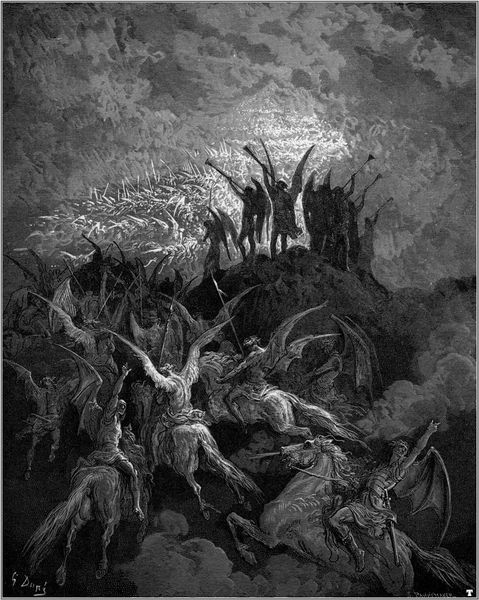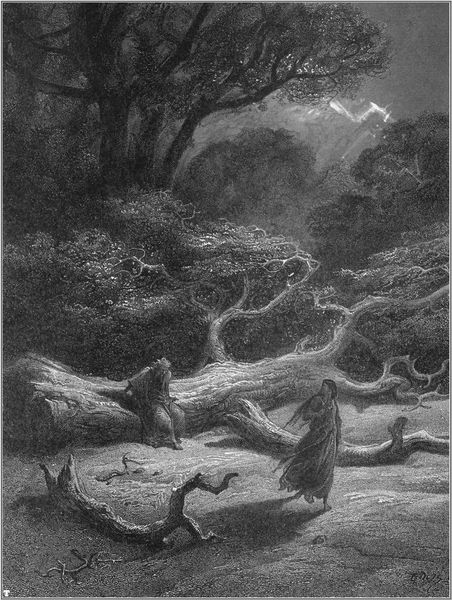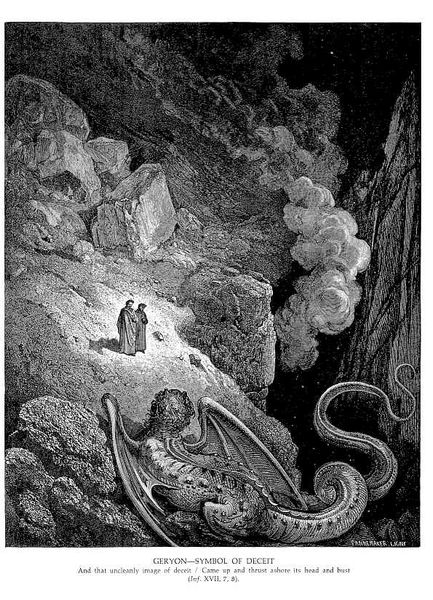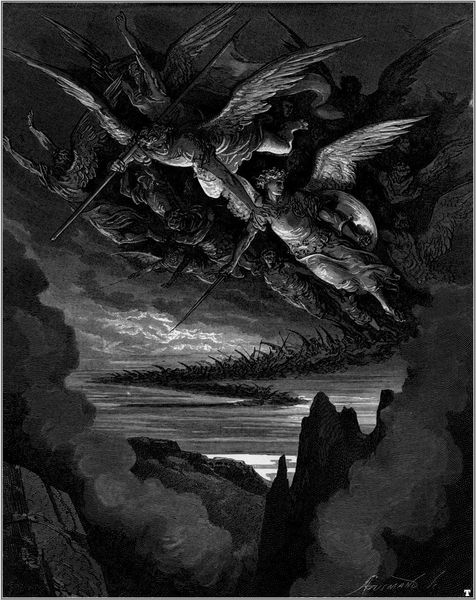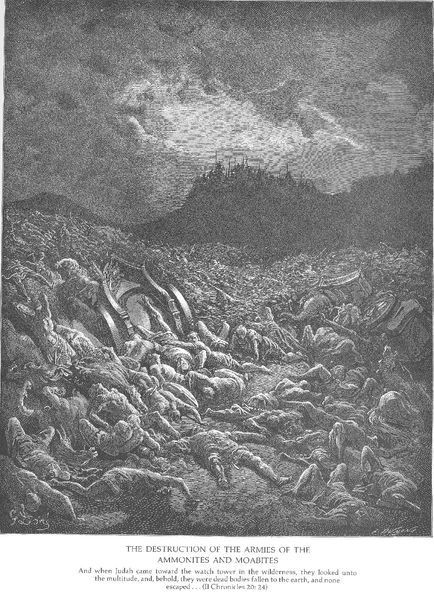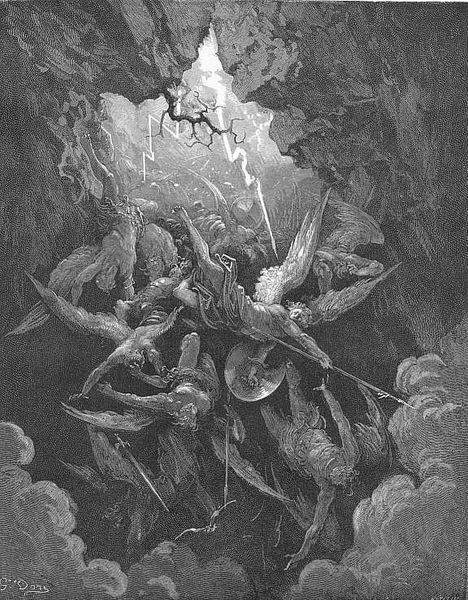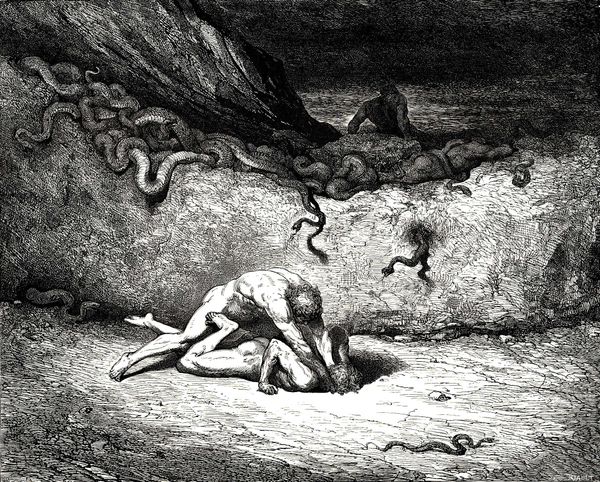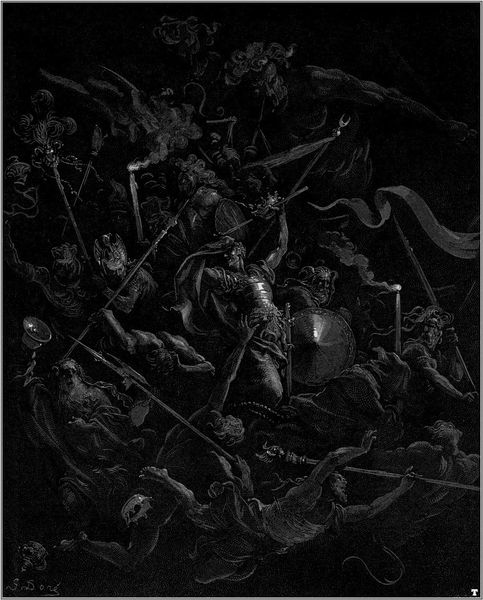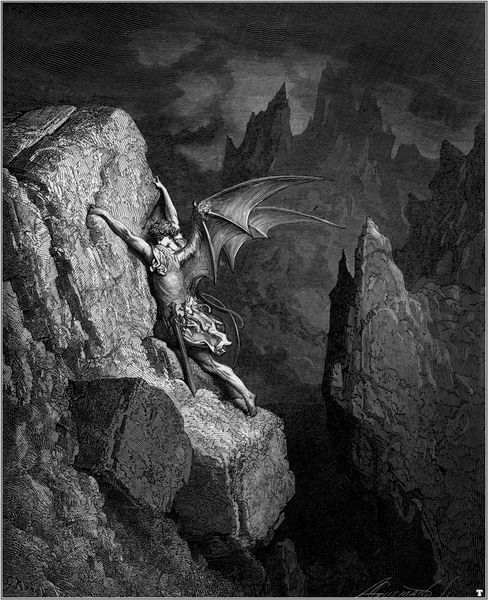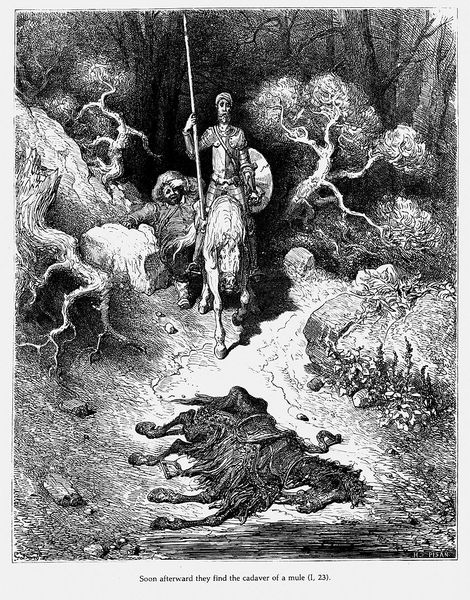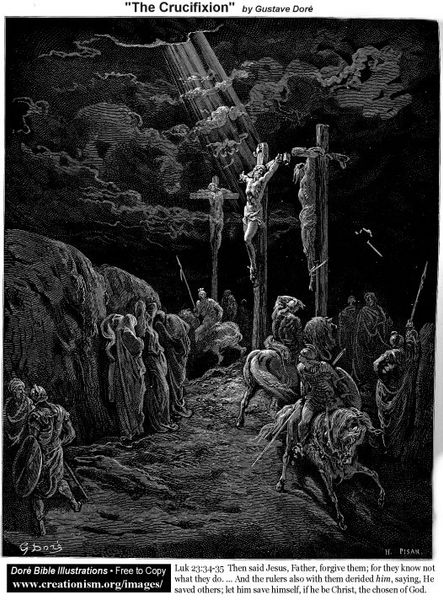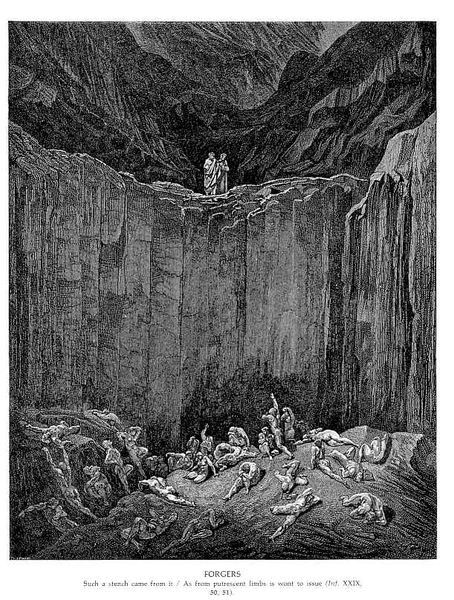
print, engraving
#
narrative-art
#
the-ancients
# print
#
landscape
#
fantasy-art
#
figuration
#
romanticism
#
line
#
symbolism
#
history-painting
#
engraving
Copyright: Public domain
Editor: We're looking at Gustave Dore's "Paradise Lost", an engraving absolutely teeming with serpentine creatures and what appear to be damned souls atop a craggy mountain. It feels incredibly ominous and otherworldly. What grabs your attention most when you look at it? Curator: You know, it’s funny, I'm immediately drawn to that mountain. It’s as if Dore's entire emotional landscape is built around this idea of the 'fall' – from grace, from innocence. The detail is insane, isn't it? Almost overwhelmingly gothic and a little tongue-in-cheek perhaps? It really does make me feel as though I've stumbled into someone's very bad dream. Does the same imagery speak to you in this way? Editor: Absolutely. It's hard to ignore all those slithering beasts. How do you think Dore's choice of engraving as a medium contributes to that feeling? Curator: The sharp, unforgiving lines lend themselves so beautifully to scenes of torment and despair. Engraving is also quite painstaking – perhaps reflecting the eternal, cyclical nature of sin and redemption that the poem explores? It makes you think, doesn't it, how one image can hold so much symbolic weight? Editor: Definitely. I hadn't considered the connection between the medium and the poem's themes so explicitly before. It's all a bit overwhelming to process! Curator: Overwhelming is the perfect word, isn't it? And that, I suspect, is exactly what Dore wanted.
Comments
No comments
Be the first to comment and join the conversation on the ultimate creative platform.
